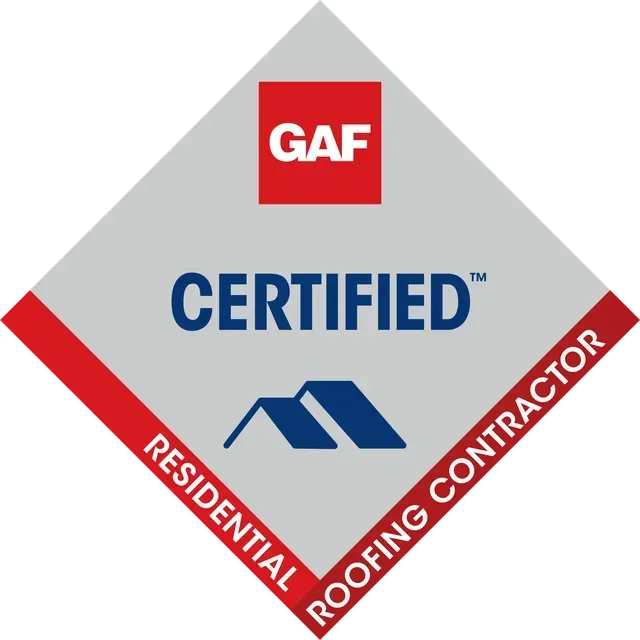Common Myths About Filing a Homeowners Insurance Claim for Storm Damage and Roofing Repairs
Common Myths About Filing a Claim for Storm Damaged Roofing
Storms can wreak havoc on your home, particularly your roof, which is often the first line of defense against the elements. Yet, many homeowners hesitate to file a claim for storm damage due to misconceptions that can lead to costly mistakes. Understanding the truth behind these myths will help you navigate the claims process with confidence and protect your investment.
Myth 1: “Your insurance automatically covers any kind of roof damage”
One widespread myth is that your insurance automatically covers any roof damage. While most
homeowners insurance policies cover damage caused by events like hail, wind, or falling debris, they often exclude damage resulting from wear and tear, neglect, or pre-existing conditions. For instance, if trees on your property are left unchecked and overhang your roof, their branches can repeatedly scrape against the roof’s edges, damaging shingles along the rake. Additionally, foliage resting against your roof can trap moisture, accelerating the aging and deterioration of roofing materials. In such cases, even if a wind/hailstorm occurs, an insurance adjuster might determine that the majority of the roof’s condition and damage stems from lack of maintenance rather than the storm itself. Ultimately, they may conclude that the damage fails to meet the policy’s criteria for storm-related coverage and your claim would be denied.
The critical takeaway for homeowners is understanding the distinction between
covered losses, which fall under the scope of the insurance policy, and
non-covered losses, which do not. Regular roof maintenance and prompt attention to potential issues can help ensure that storm damage is clearly identifiable and qualifies for coverage when it matters most. In other words, don’t put your insurance adjuster in a position where they have to split hairs between poor upkeep or existing conditions and damages caused by a storm. Proper maintenance makes it easier for the adjuster to attribute damage to the storm, streamlining the claims process and ensuring you receive the coverage you’re entitled to.
Myth 2: “Small or minor damage isn’t worth filing a claim for”
Another common misconception is that small or minor damage isn’t worth filing a claim for. Homeowners often assume that small issues, like a few missing shingles, are inconsequential. However, even minor roof damage can escalate into more severe problems, such as leaks and water damage, if left unrepaired. At first glance, a few missing shingles might not seem worth filing an insurance claim for. Many homeowners assume it’s a minor, inexpensive repair that can be handled quickly without involving their insurer. However, homeowners might want to reconsider because, in truth, the structure and functionality of a shingle roof system make this seemingly small issue more complex than it appears.
Shingles are designed to work as a unified system, overlapping and interlocking to create a watertight barrier that protects your home from the elements. This interconnected design can be likened to the Spartan phalanx—a formation where soldiers’ shields overlap to provide mutual protection. Just as removing one soldier from the formation weakens the defense and exposes others to attack, missing shingles compromise the entire roofing system, leaving underlying layers vulnerable to moisture, wind, and other damaging elements. Over time, this can lead to leaks, rot, and more extensive structural damage.
The order in which shingles are installed and their interlocking nature also contribute to
why attempting to repair individual missing field shingles isn’t always effective. Properly hand-nailing a replacement shingle requires manipulating the shingles around it, which can inadvertently damage the surrounding shingles. The overlapping and interlocking design means that disturbing one part of the system can create weak points elsewhere, compromising the roof’s overall integrity. Essentially, in trying to replace one or two shingles, you risk causing additional damage to adjacent shingles and reducing the roof’s ability to perform as a cohesive system.
A final consideration homeowners need to consider is that this type of repair work is not something that contractors can reliably guarantee or provide a warranty for. Due to the delicate and disruptive nature of replacing individual shingles, there’s no assurance that the repair will hold up over time or that the roof’s performance will remain unaffected. Additionally, if a
roof warranty was in place before such repairs were performed, attempting to replace individual shingles almost certainly voids that warranty. Most roofing warranties require repairs and replacements to follow strict manufacturer guidelines, and piecemeal fixes don’t meet these standards. There are countless other reasons why the belief that “filing a claim for minor roof damage isn’t worth it” is a myth. While we won’t explore them all here, it’s important to recognize that this misconception can lead to significant, avoidable risks.
All things considered, filing a claim for missing shingles ensures that repairs are done properly and that the entire roofing system is restored to its original, cohesive state. This approach not only protects the integrity of your roof but also preserves any warranties and long-term coverage you might have in place, preventing minor issues from escalating into major problems.
Myth 3: “Filing an insurance claim for storm damage will cause your premiums to skyrocket”
A particularly harmful myth is the belief that filing a claim for storm damage will cause your premiums to skyrocket. In reality, storm damage is considered an “act of God,” meaning it is caused by natural events entirely outside of human control.
Insurers cannot increase premiums for an individual homeowner due to such claims. However, it’s important to understand that insurers can adjust premiums on a broader scale. For instance, after a major hailstorm with widespread property damage across a specific city or town, insurance carriers may raise premiums for an entire zip code or region to reflect the increased risk. This is because severe weather events often lead to higher claims volumes, which insurers account for when setting rates in affected areas. While this regional adjustment might affect your premiums, it is not tied directly to your individual claim.
Many homeowners mistakenly believe they must wait for visible, catastrophic damage—like a hole in the roof—to file a claim. In truth, storm damage is not always immediately apparent. Issues such as granule loss, small cracks, or weakened shingles might go unnoticed without a professional inspection. These seemingly minor problems can compromise your roof’s integrity over time, making it essential to have your roof inspected after a significant storm. Catching and addressing these issues early can prevent further damage and strengthen your claim.
Final Thoughts
When it comes to determining whether you should file a claim or if you need assistance with an open claim, it is in your best interest to contact a
storm damage restoration contractor.
- Rob's General Contracting, still known to many as Rob's Roofing, is a trusted name in storm damage restoration and serves homeowners across central and northeast Pennsylvania.
- With extensive experience in storm damage repair, Rob's General Contracting can assess your roof and property to determine if the damage warrants filing a claim.
- Our team specializes in documenting damage and working directly with insurance adjusters to ensure your claim accurately reflects the necessary repairs.
- If you already have an open claim, we can provide high-quality repair services to restore your home to its original condition.
As for one final “honorable mention” amongst myths we’d like to debunk today - some homeowners assume they have no say in who repairs their roof after filing a claim. While insurance companies may suggest contractors, you have the right to choose a qualified, licensed roofer or restoration contractor you trust.
Working with a reputable company like Rob's General Contracting ensures the repairs are completed to the highest standards, giving you peace of mind and protecting your home for years to come. Moreover, a contractor who’s experienced in navigating the homeowners insurance claims process and performing storm damage repairs can ensure that your claim’s scope of work fully accounts for all necessary repairs. This level of thoroughness is crucial and, though it may sound surprising, not all essential items are guaranteed to be included at the outset of a claim!
Understanding the realities of filing a homeowners insurance claim for storm damage can save you time, money, and stress. Don’t let misconceptions stop you from protecting your home. Act promptly after a storm, consult professionals like Rob's General Contracting when needed, and stay informed about your rights and coverage to safeguard your most valuable asset.
Request Roofing Services or Storm Damage Restoration Online and Get a Rapid Response from a Project Manager!


BROWSE OUR WEBSITE









CashApp
CONTACT INFORMATION
Phone: (570) 648-5414
Email: info@robsgc.com
Address: 257 South Market St., Shamokin, Pennsylvania 17872
Business Hours
- Mon - Sat
- -
- Sunday
- Closed
24-hour emergency
OUR LOCATION




